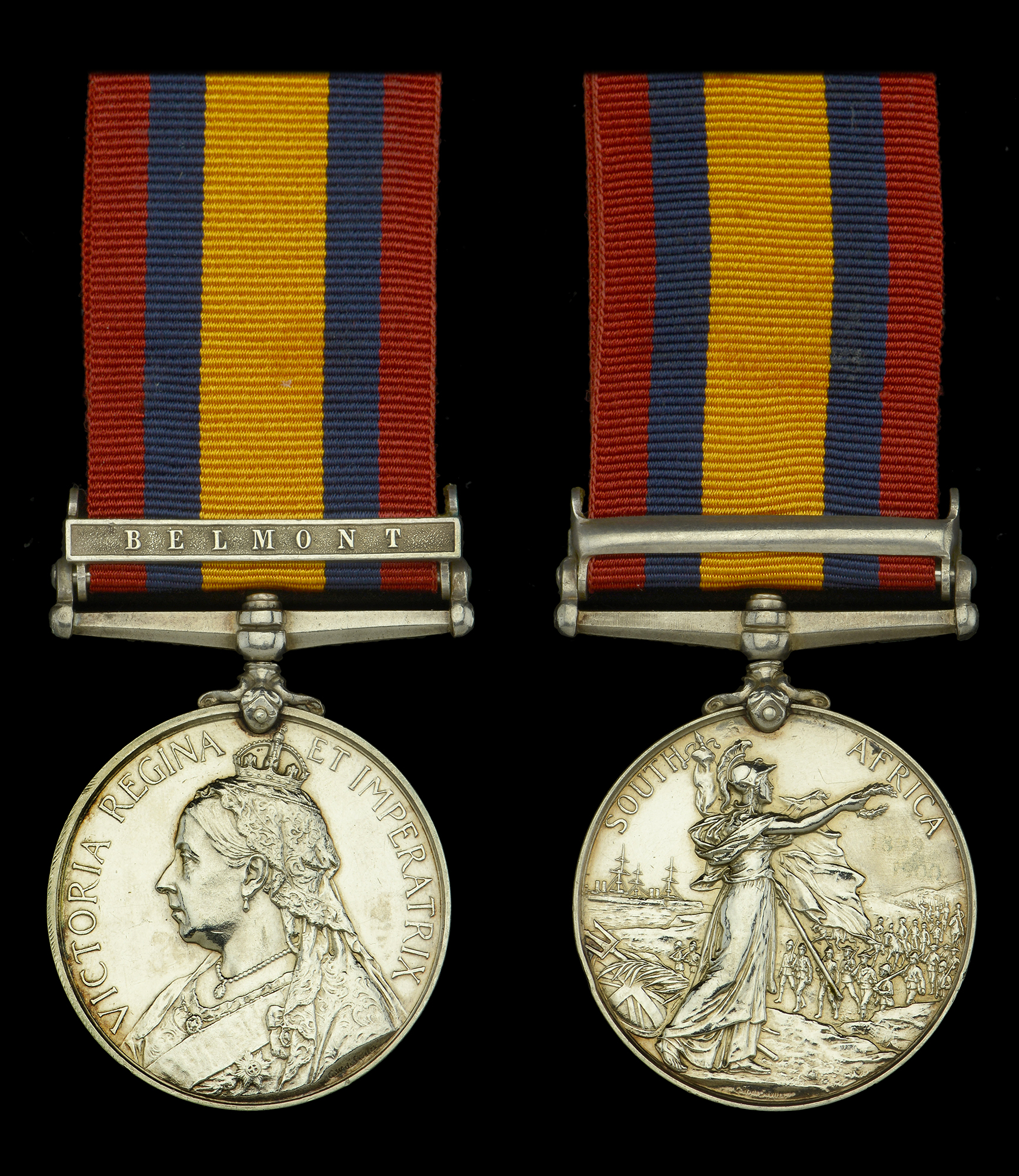The Q.S.A. awarded posthumously to Private J. Boyle, Royal Marine Light Infantry, killed during the Naval Brigade’s epic action at Graspan in November 1899 Queen’s South Africa 1899-1902, 1 clasp, Belmont (8034 Pte. J. Boyle, R:M:L:I: H.M.S. Doris) minor edge bruise, otherwise nearly extremely fine £1,200-£1,600 --- Importation Duty This lot is subject to importation duty of 5% on the hammer price unless exported outside the UK --- --- Private John Boyle was killed in action at Graspan (Enslin) on 25 November 1899. Four officers and 12 men of the Royal Naval Brigade were killed at Graspan, and one man died of wounds. At 7am on 25 November 1899, at Graspan, the infantry began to work forward under the cover of artillery fire. The Naval Brigade led the storming force, extended in a single line, each man six paces apart from his neighbour. As they began the ascent, advancing by brief rushes in very open order, the hill suddenly appeared to swarm with enemies; from the crest, from behind every boulder poured a murderous fire. The naval officers of the Brigade still carried swords and could be readily distinguished; they were the target of every Boer rifle. Major Plumbe of the Marines, who was gallantly leading in front of his men, closely followed into the storm of battle by his little terrier, staggered, shouting to his soldiers, not to mind him, but to advance. He never rose again. Colonel Verner, who survived the action, afterwards stated that ‘no better kept line ever went forward to death or glory’. However, so terrible was the fire and so annihilating it’s effects upon the Brigade, that the order had to be given to retire upon the last cover. For a moment it seemed as though the attack had failed. But the artillery poured its fire upon the crest of the ridge with more vehemence than ever; and up the slopes in very open order, firing and cheering, came the Yorkshire Light Infantry to the support of the hard pressed Naval Brigade, while the Loyal North Lancashire’s and Northumberland’s too, were sweeping forward upon the line of heights held by the Boers. Once more the Seamen and Marines pressed upward at an order from the wounded Captain Prothero ‘Men of the Naval Brigade, advance at the double; take that Kopje and be hanged to it.’ The men responded magnificently. For the last few yards of the advance the Boers could no longer fire with safety at their assailants. Their very position became disadvantageous as the slopes were so steep that they had to stand up to see their assailants, and in the deluge of shrapnel and rifle bullets which beat upon the summit, this meant almost certain death. Lieutenant Taylor of the Navy and Lieutenant Jones of the Marines, the last in spite of a bullet in his thigh, were the first into the Boer entrenchments at the top. They were closely followed by their men, and the Kopje was won. ‘I shall never forget the faces of some of those who had fallen in the final rush,’ said Colonel Verner, of the dead of the Naval Brigade. ‘They lay about in every attitude, many with their rifles, with bayonets fixed, tightly clutched in their hands, and in some cases still held at the charge. These were the same hard featured, clean cut faces, which but a short time before I had watched laboriously skirmishing across the veldt, now pale in death, but with the same set expression of being in terrible earnest to see the business through.’





